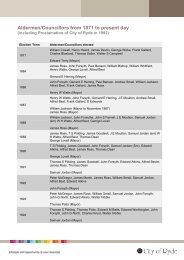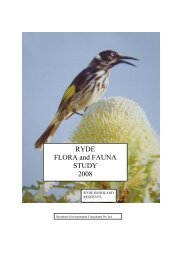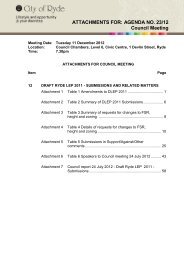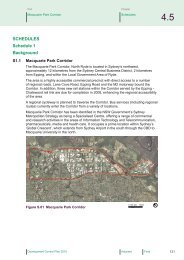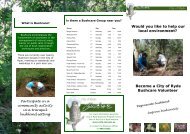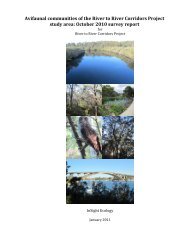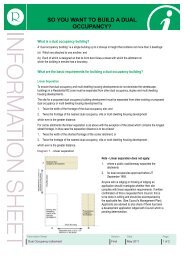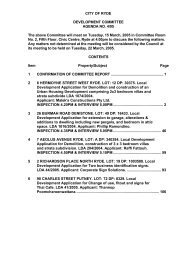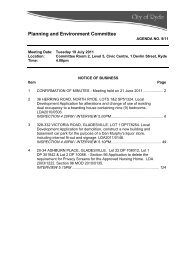RYDE FLORA and FAUNA STUDY 2007 - City of Ryde - NSW ...
RYDE FLORA and FAUNA STUDY 2007 - City of Ryde - NSW ...
RYDE FLORA and FAUNA STUDY 2007 - City of Ryde - NSW ...
You also want an ePaper? Increase the reach of your titles
YUMPU automatically turns print PDFs into web optimized ePapers that Google loves.
Biosphere Environmental Consultants Pty Ltd<br />
<strong>Ryde</strong> Flora <strong>and</strong> Fauna Survey <strong>2007</strong> 20<br />
In addition, animal tracks, burrows, diggings, shed fur or feathers <strong>and</strong> scats were<br />
searched for <strong>and</strong> collected. Scats <strong>and</strong> fur samples were collected by bush regeneration<br />
staff in the field. If these contained bone or hair samples they were forwarded to Dr<br />
Read for analysis.<br />
Arboreal Mammals:<br />
Arboreal mammals were detected mainly by spot-lighting at night. In general, all <strong>of</strong><br />
the walking tracks in each reserve were walked slowly while panning a spotlight<br />
either side <strong>of</strong> the track. If an animal’s eye shine was detected, the location <strong>of</strong> the<br />
animal was approached directly, keeping the spotlight on the animal so that it did not<br />
move away. In most cases, the animal could be identified visually. In a few instances<br />
(e.g. sugar gliders) the animals were identified by call.<br />
Spotlighting was carried out during the first three hours after dusk. Most reserves<br />
could be adequately covered in this time; some <strong>of</strong> the larger reserves (e.g. Field <strong>of</strong><br />
Mars Reserve) required more than one night <strong>of</strong> spotlighting to cover the length <strong>of</strong> the<br />
reserve.<br />
In addition, an examination <strong>of</strong> trees for scratch marks <strong>and</strong> drays took place during<br />
daylight hours.<br />
Bats:<br />
Flying foxes were detected by spotlighting at night whereas insectivorous bats were<br />
detected using ultra-sonic (ANABAT) bat recorders. The recorders are h<strong>and</strong>-held <strong>and</strong><br />
carried through the reserves at night while spotlighting was in progress. Recorded bat<br />
calls were later analysed using Anabat 5.0 s<strong>of</strong>tware.<br />
Day Birds:<br />
Birds were surveyed in the early mornings in two ways, in the survey quadrat areas,<br />
two mornings <strong>of</strong> twenty minutes survey time (in each survey period) was devoted to<br />
recordings the birds that were seen or heard there. In addition, opportunistic bird<br />
surveys were carried out at other times throughout the reserves.<br />
Owls <strong>and</strong> Night Birds:<br />
Owl surveys were conducted at night using a small portable amplifier. Owl calls were<br />
broadcast at night for Southern Boobook Owls, Powerful Owls, Sooty Owls, Masked<br />
Owls <strong>and</strong> Barn Owls. Calls were played at suitable sites each night <strong>and</strong> the amplifier<br />
was aimed away from nearby residences before the sounds were played. A listening<br />
period <strong>of</strong> 2 minutes followed the playing <strong>of</strong> each tape. If it was possible to visually<br />
identify the responding owl, all attempts were made to do so.<br />
Other night birds, such as Tawny Frogmouths, Owlet Nightjars <strong>and</strong> Night Herons<br />
were also spotlighted during night surveys.<br />
Reptiles:<br />
Reptiles were searched for by h<strong>and</strong> during the day. On two sunny mornings, the quadrat<br />
survey areas were walked <strong>and</strong> all potential reptile shelter sites examined. Where possible,




